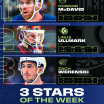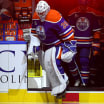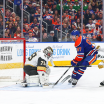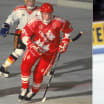Between New York getting consistently strong goaltending from Henrik Lundqvist and Hayes having an above-average 5-on-5 on-ice shooting percentage, he has never had a combined shooting and save percentage below 1020. Since arriving in the NHL, he sits at 1023, which ranks 13th among skaters to play at least 200 games since 2014-15.
Would Hayes have the same percentages in a new situation? That is something an interested team would have to determine.
Hayes (6-foot-5, 216 pounds) is versatile. He has primarily played center for the Rangers but has experience on the wing. He plays on the penalty kill and the power play and has also improved his work on face-offs, getting close to a break-even winning percentage (49.7) in the past two seasons.
Hayes has 10 points (two goals, eight assists) in 34 Stanley Cup Playoff games. It's a small sample, but that .29 point per game average would be part of the equation for the acquiring team, which undoubtedly would have postseason aspirations.
The question for New York is whether it would prefer to invest in a future with Hayes.
The prime years for many players tend to range from ages 22 to 25 and the Rangers would have to understand the next contract for Hayes could be for seasons that likely won't be as productive as this one.
That is not to suggest Hayes' game will collapse, but most players are better in the early-to-mid-20s compared to their late 20s or early 30s.
Could New York benefit more in the long run by acquiring younger pieces for Hayes to help advance rebuilding efforts?
There are many contenders who could use Hayes in a top-six forward role, whether at center or on the wing, and that appeal should bring some quality. Will general manager Jeff Gorton target younger pieces that could align their career timelines more closely with the Rangers' top prospects, including Filip Chytil, a 19-year-old forward, and Brett Howden, a 20-year-old forward?
New York doesn't have to trade Hayes; it could sign him to a contract and he could be a positive contributor for years.
But, for a rebuilding club, it could make more sense to take a shot at the upside of a younger player or players, understanding it's a step back in the short term in hopes of taking a leap forward.


















